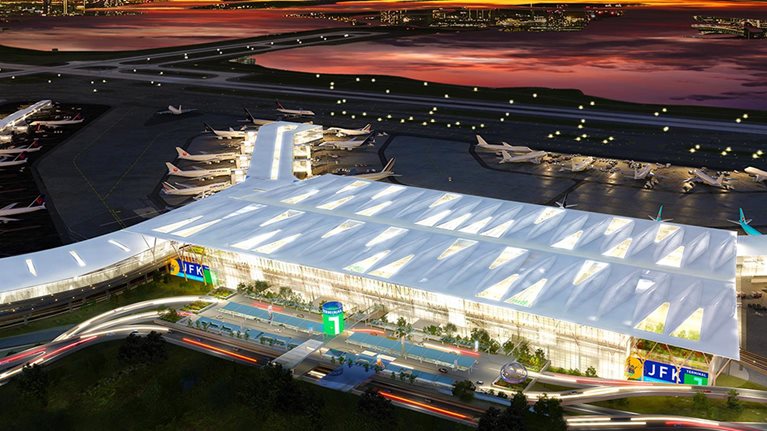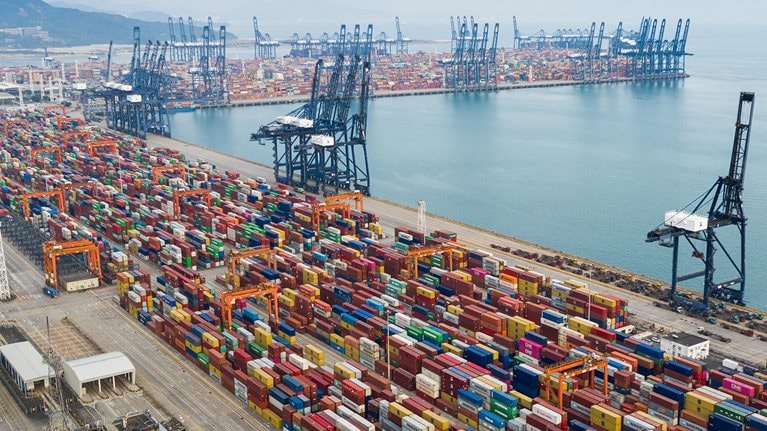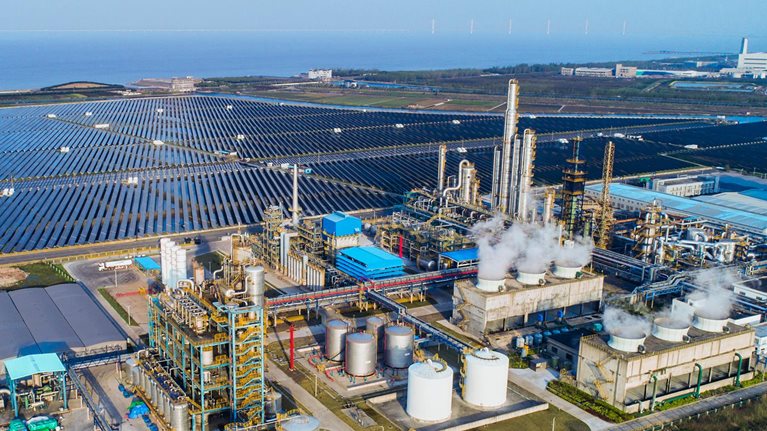As sectors across the construction ecosystem adopt new digital technologies and aim to reduce their carbon footprints, the rail industry faces unique challenges. The industry is heavily regulated—safety and reliability are critical—and companies must make difficult decisions to improve performance and manage risk without causing inconvenience. Improving project performance and delivery from design to construction is key to providing sustainable infrastructure, attracting new talent, and keeping up with evolving government policies and regulations.
To learn more about how the industry can stay on course, McKinsey spoke with Rob McIntosh, route managing director for Network Rail, and Roger Bayliss, capital works director of MTR Corporation Limited (MTRCL).
McKinsey: What are the top three factors that would improve project performance and productivity in your current portfolio of infrastructure projects?
Rob McIntosh: The most important thing is to make the uncomfortable decisions early in the project. If you apply the same energy and rigor in the first third of a project that’s traditionally applied in the last third, when everyone’s a bit panicked and the deadline is near, your last two-thirds will be much easier. Focus the energy into getting the big scope and integrations decisions sorted and get a good view of how to manage your risks.
Next is leadership. Driving that energy early on requires the willingness to face up to difficult decisions. In those early stages, this can seem difficult because lots of stakeholders are advocating their positions. But it will be far more painful in the last third if you’re not making the right decision early.
Third, using digital technology and data in the design process to manage risk and cost. This can help give everyone information about the decisions. You’re able to use data to model what the outcome is going to be and demonstrate to someone that it’s either practical or unreasonable to implement whatever it is that you’re being pushed toward.
Roger Bayliss: First, I would say technology and innovation. On technology, MTRCL is committed to using building information management on all future railway-extension projects, from design to construction, and ultimately delivering a digital twin to operations. And on innovation, there is no doubt that industrial techniques—such as design for manufacture and assembly, offsite fabrication, and modular—will become increasingly important.
Second, new ways of working. The focus should be on collaboration to deliver project objectives and reduce the inherent waste in the construction process. We should recognize our respective responsibilities and hold ourselves and each other accountable.
And third, a reliable supply chain. Consultants and contractors need sufficiently high-quality resources, just as we need strong project-management and -delivery capabilities.
McKinsey: How can digital and new technologies help with project delivery?
Rob McIntosh: One of the opportunities is to use tools to model the solution. Too often we default to just building more infrastructure rather than using digital twins to model what the system needs and what the outcomes will be. We’re working on modeling train performance—the industry doesn’t yet have a standard model for that. It has tools that help me form a view, but it does not have a model that says how reliable the train service is going to be.
Roger Bayliss: The world is going digital, and Hong Kong and MTRCL are no exception. We are embracing digital technologies to strengthen our capital-asset delivery and management. For example, our Capital Works business unit is transitioning to a smart organization that plans, designs, manages, and constructs our projects to enable digital operation of the railway.
Our aspiration is for future construction sites to be smart, informed, and connected by digital technology, adopting ways of working that empower our skilled people to enhance safety, strengthen quality, and drive improved project outcomes. As an example, connecting construction sites to cloud-based solutions allows for seamless information flow and for data to be structured to enable real-time decision making.
McKinsey: What actions are you taking to improve collaboration across the value chain?
Rob McIntosh: In my region, which covers about a third of the national network, we’ve gone live with a new capital-delivery organization. We structured out one-third of our head count in capital delivery, and we have a new model based on the client taking an assurance role (rather than a management role) for the supply chain.
Suppliers will not be able to rely on the client the way they used to. They’ll be held to account more by the client, and there will be risk and reward associated with that. It’s important to have your goals and targets aligned with the organizations you collaborate with. That doesn’t mean incentives have to be the same. The best route to achieving aligned targets is for everyone to have some upside in the outcomes and for the risk related to achieving those outcomes to be clearly left with the party best placed to manage and mitigate it.
Roger Bayliss: To strengthen our commitment to collaboration, we’re looking to adopt contract forms tailored to the specific needs, risks, and challenges presented by a given contract, and we are committed to a program of internal and external training for our Capital Works staff to ensure they have the required skills and competencies.
We incorporate incentives around safety and environmental performance into our contract provisions and will extend this approach to quality. This means adopting two-stage early contractor involvement for our technically complex and high-risk contracts, with an emphasis on building the team and preparing for delivery.
Finally, we are reinvigorating project partnering, with a focus on working collaboratively to drive out waste and improve performance.

Voices on Infrastructure: Improving project development and delivery
McKinsey: How is your organization responding to the imperative for delivering sustainable infrastructure? Where do you see challenges, and what are the opportunities?
Roger Bayliss: MTRCL has recently established a new corporate strategy with ESG [environmental, social, and governance] as one of the key pillars. To this end, we are aligned with Hong Kong’s aim for carbon neutrality by 2050. First, we aim to achieve Building Environmental Assessment Method (BEAM) Plus Gold or above certification for new railway stations, to establish a high level of sustainable design and construction through a recognized and structured sustainability-assessment framework. Second, we aspire to deliver our first carbon-neutral station, built using the digital tools and techniques mentioned earlier, with a focus on industrialized methods.
Rob McIntosh: Sustainable rail infrastructure and operations need to have—and will have—a profound effect, because reducing our emissions has to be much more prevalent in our decisions. The industry needs to respond not only with the solutions it tables but also in the way it builds those solutions and in the materials used.
We might be heading toward a period in which there needs to be more consideration of wider societal impacts and benefits: employment, skills, education, healthcare, air quality. I hope this is a wake-up call to be more focused on societal benefits—and sustainability would be a massive part of that.
We need to be clear and consistent about the outcomes. You can’t keep everyone happy in the context of rail. Being able to model and make decisions about what you do with the whole system is important. It’s also important to understand how infrastructure can ensure that every pound you spend is genuinely needed and spent in the right place.
McKinsey: What steps are you taking to attract, train, and retain the required talent for your organization?
Roger Bayliss: In anticipation of the future, we restructured our projects and engineering divisions to form Capital Works. In doing so, we have revamped our competency management and learning-and-development approach to ensure we have the right competencies in the right place at the right time.
A strong culture is an essential part of a successful organization. In Capital Works, colleagues can get exposure to a multidisciplinary environment and gain experience in various phases through the whole project life cycle. We also encourage colleagues to broaden their skill sets through job rotation or enrichment, such as exchange of engineering and maintenance design and construction colleagues.
Rob McIntosh: That’s been a challenge for a while. When I speak with colleagues outside of rail, they talk about data-analysis capabilities being one of the most finite and sought-after resources around the world. I think we need to retrain people and rethink our organizations. If you bring data analysts into an environment that’s less constrained and safer, you start to see some real breakthroughs, but if you bring them into a heavily regulated environment that starts with, “It doesn’t work that way around here,” you run the risk of them leaving for a more progressive environment.
McKinsey: How can government policy and regulation best support project development and delivery?
Roger Bayliss: As the ultimate decision maker on railway development, governments could introduce future projects as a measured pipeline and help avoid “boom and bust” scenarios, which characterize public works in some places. Governments can also take the lead to drive digital. The acceptance of digital submissions in the statutory process and the greater use of digital communication tools, including online-meeting tools, would be a real benefit as the industry itself embraces a digital agenda.
With Hong Kong pledged to become carbon neutral by 2050,1 the government can take a leading role in shaping ESG initiatives with the infrastructure, property, and construction industries, among others. This may involve changes to the current approach to project performance measurement and evaluation.
Rob McIntosh: One of the best clients I ever worked for when I was in the private sector was the Singapore Land Transport Authority. The scale of a transport system like Singapore’s is helpful because you can get your arms around it and therefore more easily take a full-system perspective. The authority is also very well informed and benefited from leadership who were able to set a consistent direction.
On a larger scale, there’s a question of integrating projects with policy, so in the UK that would be led by devolved government or other subnational bodies. Of course, the complication that we have is that the regions are all interconnected via road, rail, and air systems. As a result, there will always be a need for some kind of blend of national and local perspectives in policy making, but there is no reason that should not be achievable.
Comments and opinions expressed by interviewees are their own and do not represent or reflect the opinions, policies, or positions of McKinsey & Company or have its endorsement.


